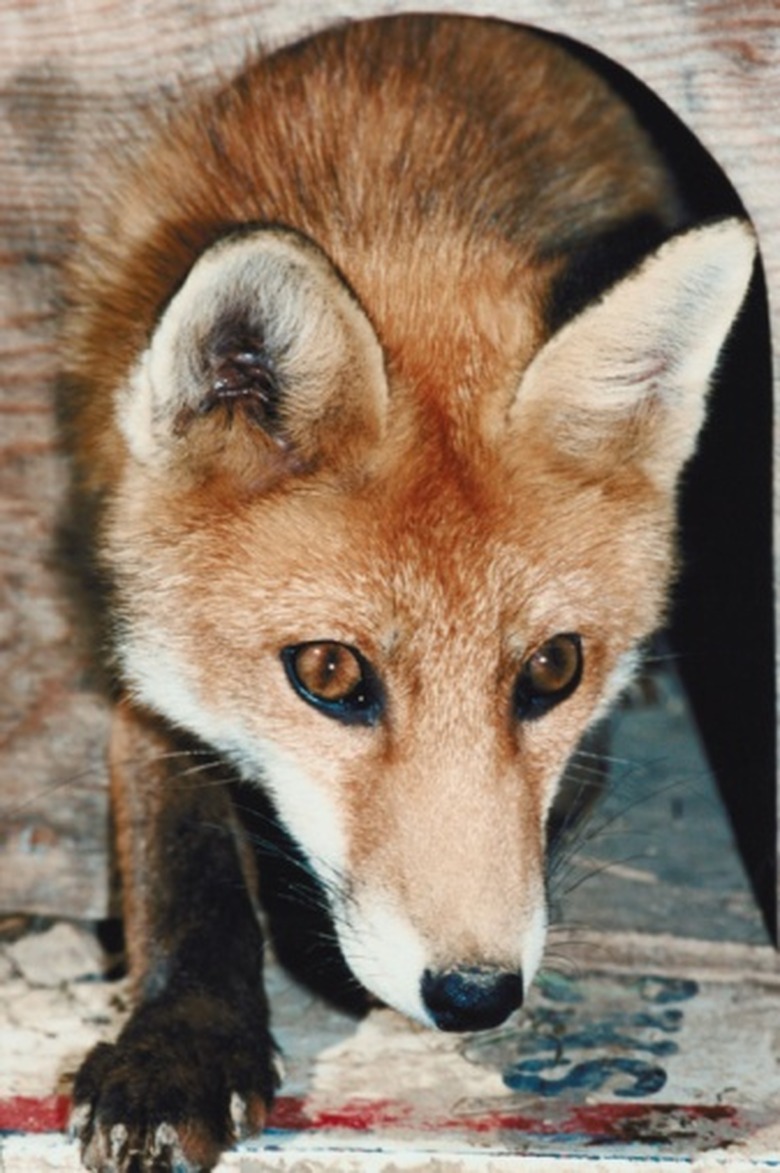Mating Habits Of Foxes
Foxes resemble dogs with long muzzles and pointed ears. Three types of foxes are known in the wild: the red, gray, and arctic foxes. A fox's weight ranges from 8 to 15 pounds, depending on the fox type. Additionally, a fox's length can span between 2 and 4 feet. Each fox type has similar characteristics for the overall species, but mating habits do differ.
Red Fox
Red Fox
Red foxes breed once a year during the winter months, usually between December and March. Red foxes usually exhibit promiscuous relations with multiple mates. But, once a male and female begin the courting process, they bond by traveling together for about three weeks. During the three-week period, the pair hunt together and eventually find a suitable den. Courting foxes typically exhibit loud barking and screams. After the pair have mated, the gestation period is a short 52 days. Red fox litters usually number between four and nine youngsters.
Gray Fox
Gray Fox
Gray fox mating habits mimic the red foxes' courting process. However, gray foxes mate once and remain with their partner for life. Unlike the red fox, the male gray fox assists the female with the fox pups, educating the three to seven youngsters about hunting. In addition, the male gray fox supplies needed food for the growing fox family while the female remains in the den.
Arctic Fox
Arctic Fox
The arctic fox resides in the cold region of Alaska and the Arctic Circle. Although life is typically solitary for these wanderers, mating brings the foxes together. The courting process involves play time between the male and female. They run and frolic together, giving each other small affectionate nips. Litter size can run as high as 15, but usually seven pups are born each mating season. Like the gray fox, the male arctic fox protects and supplies food to the mother and pups while living in the den.
Variations In Mating Habits
Variations In Mating Habits
An illness called sarcoptic mange decimated the fox population in 1994 near Bristol in the United Kingdom. The University of Bristol studied the mating habits before and after the population change. Researchers found that red foxes were less promiscuous with a smaller fox population. Dominant females gravitated and mated with dominant males. Although promiscuity decreased, less competition within the species did not produce monogamous relationships.
Mating Limitations
Mating Limitations
Winter is difficult for fox populations. Some foxes die from starvation or the cold. According to the Young People's Trust for the Environment, 55 percent of foxes die within the first year of life and never have the chance to mate and produce offspring.
Cite This Article
MLA
Rodriguez, Amy. "Mating Habits Of Foxes" sciencing.com, https://www.sciencing.com/mating-habits-foxes-8659127/. 22 November 2019.
APA
Rodriguez, Amy. (2019, November 22). Mating Habits Of Foxes. sciencing.com. Retrieved from https://www.sciencing.com/mating-habits-foxes-8659127/
Chicago
Rodriguez, Amy. Mating Habits Of Foxes last modified March 24, 2022. https://www.sciencing.com/mating-habits-foxes-8659127/
